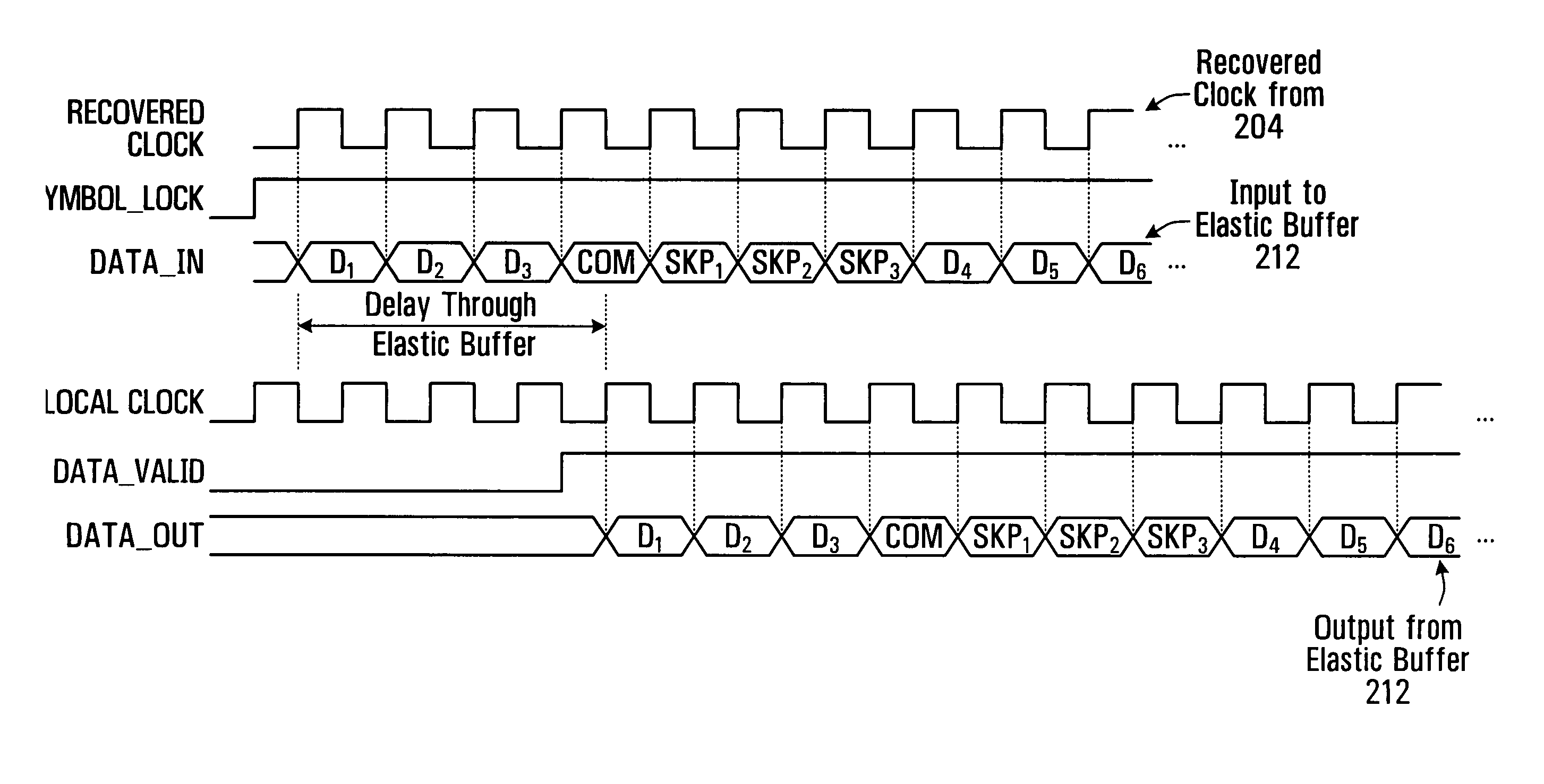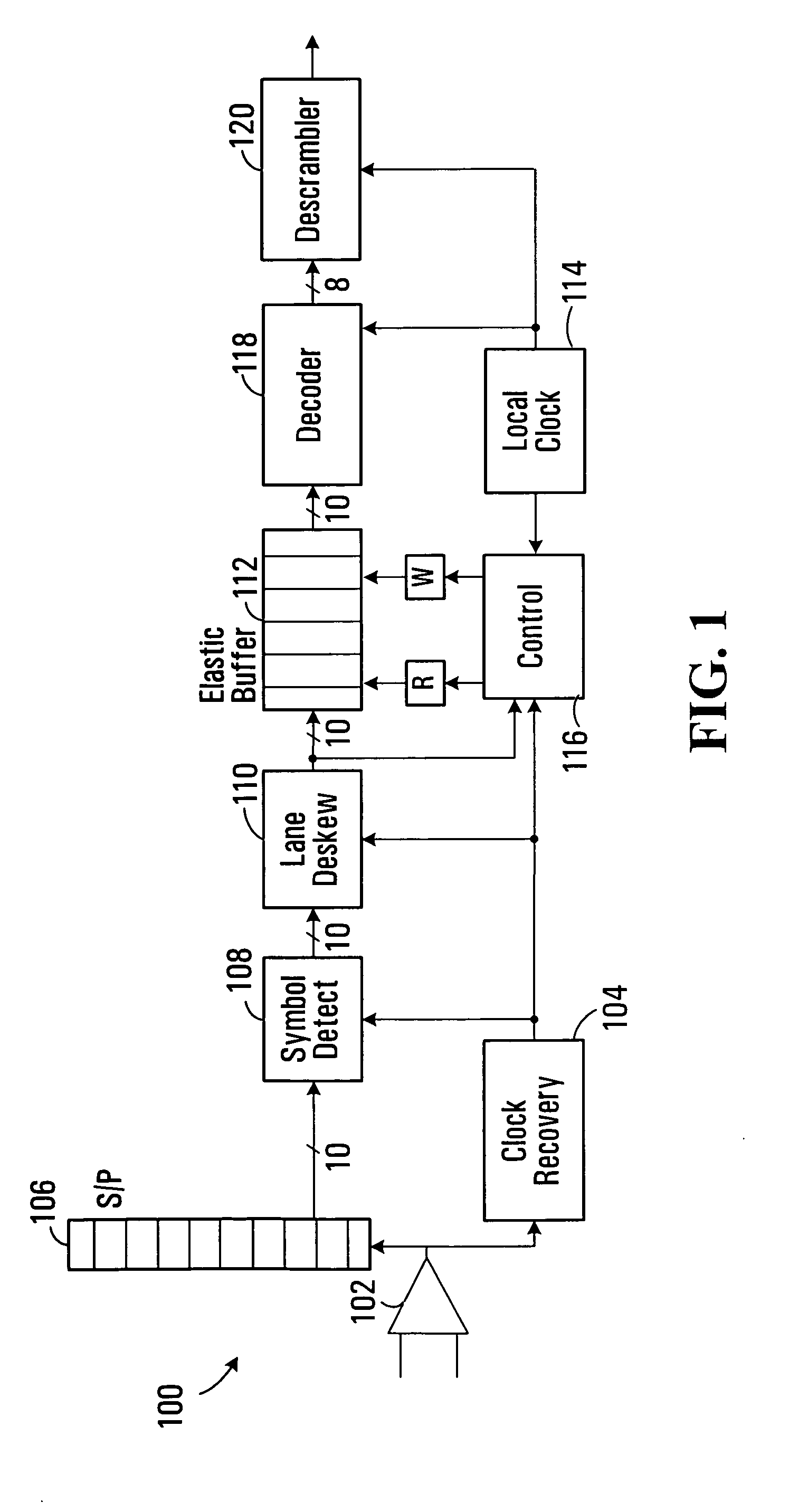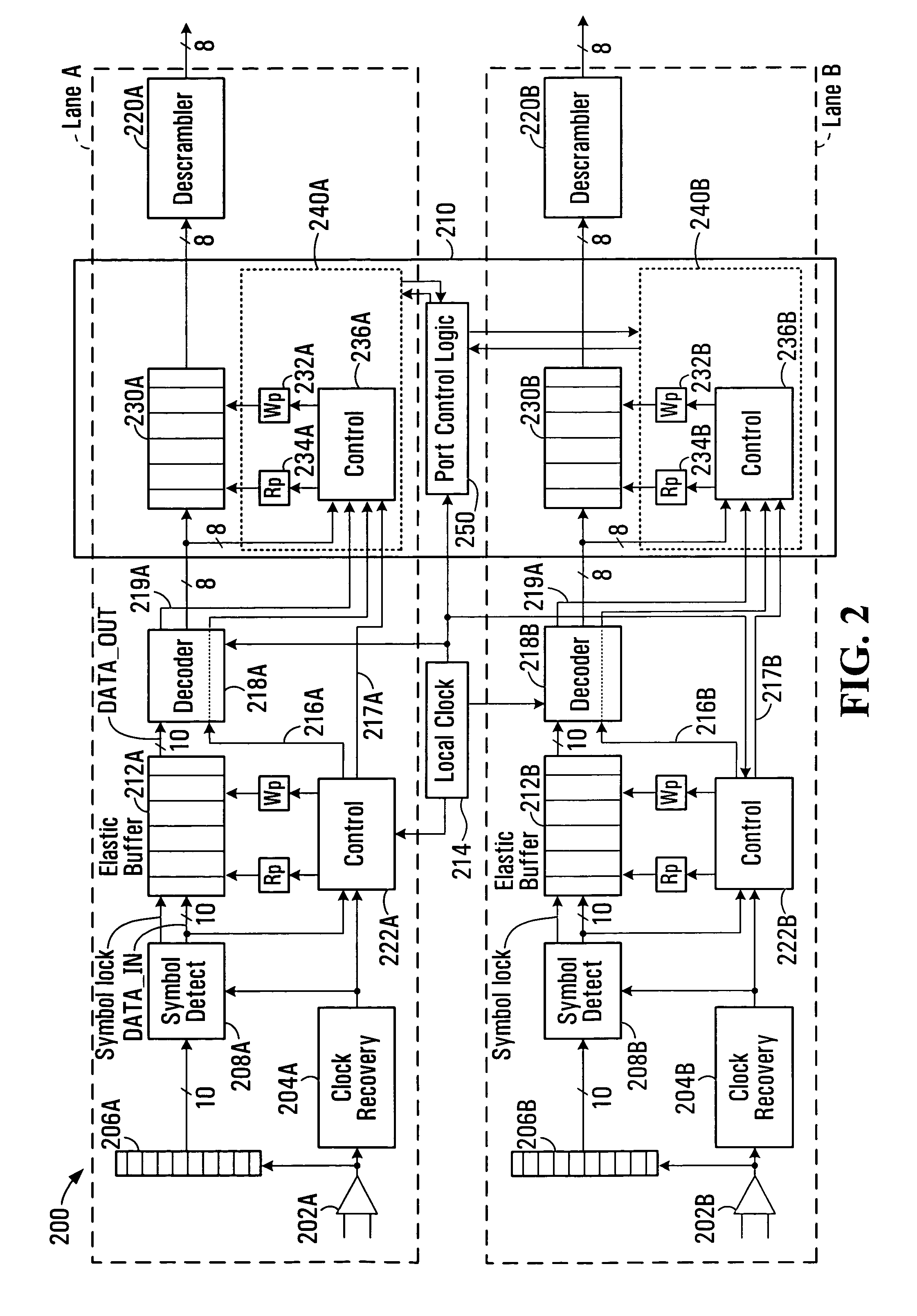Receiver and method for synchronizing and aligning serial streams
- Summary
- Abstract
- Description
- Claims
- Application Information
AI Technical Summary
Benefits of technology
Problems solved by technology
Method used
Image
Examples
Embodiment Construction
[0026]FIG. 1 schematically depicts a conventional PCI Express compliant receiver subsystem 100. Subsystem 100 is representative of the receiver for a single lane in a PCI Express link. A PCI Express compliant device thus includes multiple receiver subsystems, like subsystem 100.
[0027] As illustrated, subsystem 100 includes a differential receiver 102, to receive a differential signal provided by a complementary subsystem of a PCI Express compliant transmitter (not illustrated). Differential receiver 102 converts the incoming differential voltage on a lane to a serial bit stream. The bit stream is an 8B / 10B encoded binary serial data stream which includes sufficiently frequent transitions from ‘1’ to ‘0’ and ‘0’ to ‘1’, to enable extraction of an embedded clock. The output of differential receiver 102 is provided to a clock recovery circuit 104, and a serial-to-parallel converter 106.
[0028] Serial-to-parallel (S / P) converter 106 and symbol detector 108 cooperate to convert the inpu...
PUM
 Login to View More
Login to View More Abstract
Description
Claims
Application Information
 Login to View More
Login to View More - R&D
- Intellectual Property
- Life Sciences
- Materials
- Tech Scout
- Unparalleled Data Quality
- Higher Quality Content
- 60% Fewer Hallucinations
Browse by: Latest US Patents, China's latest patents, Technical Efficacy Thesaurus, Application Domain, Technology Topic, Popular Technical Reports.
© 2025 PatSnap. All rights reserved.Legal|Privacy policy|Modern Slavery Act Transparency Statement|Sitemap|About US| Contact US: help@patsnap.com



